![]()
![]()
![]()
Use LEFT and RIGHT arrow keys to navigate between flashcards;
Use UP and DOWN arrow keys to flip the card;
H to show hint;
A reads text to speech;
33 Cards in this Set
- Front
- Back
|
Name 5 forms of wired communications |
Single wire Twisted pair Coaxial cable Hollow waveguide Fibre optical cable |
|
|
Name 5 forms of wireless communication |
Uhf Vhf Lightwave (laser) Microwave Satellite |
|
|
Electromagnetic frequency spectrum |
30 Ghz - 300Ghz: EHF 3 Ghz - 30 Ghz: SHF 300 Mhz - 3Ghz: UHF 30Mhz - 300Mhz: VHF 3Mhz - 30Mhz: HF 300Khz - 3Mhz: MF 30Khz - 300Khz: LF 3Khz - 30Khz: VLF |
|
|
Draw a time domain diagram of 60Hz |

|
|
|
What's the equation to calculate wave length? |
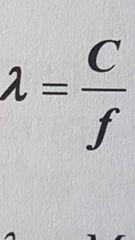
|
|
|
Draw and fully label a frequency domain diamgram for radio stations in auckland |

|
|
|
What are the three types of comms systems? Explain them and give and example. |
Simplex: information only one way e.g. Television Half-duplex: information two ways but only one at a time e.g. Walkie-talkies Duplex: information two ways simultaneously e.g. cellphone calls |
|
|
What four requirements satisfy the aim of naval comms |
Security Speed World wide coverage Continuous availability 24 hrs a day |
|
|
What factors affect radio comms |
Reliability Propagation effects Security Vulnerable |
|
|
What do all radio transmitters consist of? |
Transducer Modulator RF oscillator Power amplifiers |
|
|
Define an am wave |
The amplitude of the signal is changed in line with the instantaneous intensity of the sound |
|
|
Draw a time domain diagram of the AM modulated waveform for a 50% and 100% modulated waveform. |
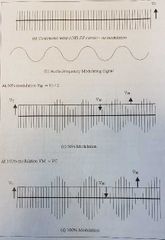
|
|
|
Draw the block diagram of a basic transmitter |
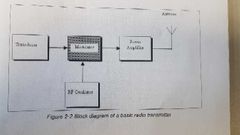
|
|
|
Given the power of an AM signal is 50 watts, Draw and fully label a frequency domain diagram for the DSB AM signal. Use 40% modulation. |
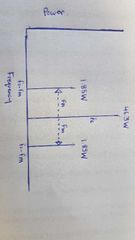
|
|
|
Draw and label a frequency domain diagram for a 7MHz signal modulated by 2Hz to 20Hz |
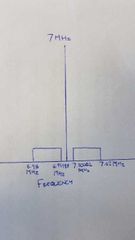
|
|
|
Draw and label the filter method for an SSB transmitter |
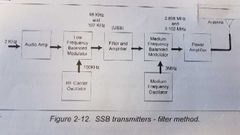
|
|
|
Draw and label a block diagram for a SSB transmitter phase shift method |
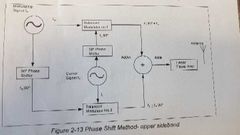
|
|
|
Define frequency deviation (Δf) |
The amount of frequency change of the the carrier from the carriers resting frequency. This change or deviation is determined by amplitude of modulating signal |
|
|
Define modulating Frequency (fM) |
Determines the rate at which the FM swings above and below the carrier frequency |
|
|
Define modulating index (mf) |
The ratio of the frequency deviation of the carrier, to the modulating signal frequency determines the transmitted power of the carrier power to power of the side frequencies or bandwidth |
|
|
Equation to calculate modulating index |
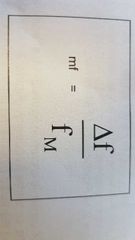
|
|
|
Use a diagram to explain frequency modulation |
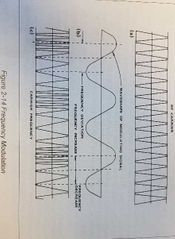
|
|
|
Draw a diagram showing the FM frequency spectrum for various levels of modulation while keeping the modulation frequency constant (ie sine wave). Use mf of 0.5, 1.0, 2.5 and 4.0 |
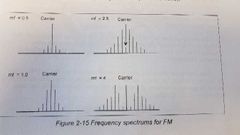
|
|
|
Draw a diagram of an FM broadcast carrier with guard |
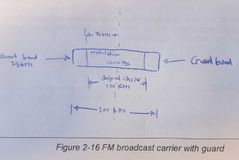
|
|
|
Draw the block diagram of a low-level transmitter |
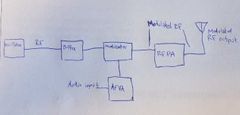
|
|
|
Draw a block diagram of a high level transmitter |

|
|
|
Using a diagram, explain pre-emphasis |
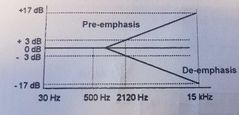
|
|
|
What is the equation for percentage modulation |
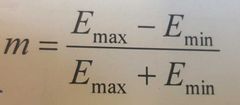
|
|
|
Draw a simple receiver |
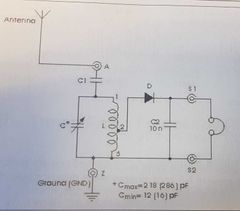
|
|
|
Draw a block diagram for a TRF receiver |
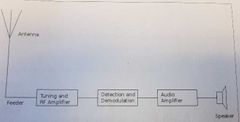
|
|
|
Draw the block diagram for the AM superheterodyne |

|
|
|
Name & describe the purpose of the AM superheterodyne parts (need to zoom to see all answers) |
Antenna: pick up RF and pass it on to the RF amplifier RF stage: tunes and amplifies received signal (fc) Mixer: has two inputs (fc & flo). Output is flo-fc and is called the intermediate frequency (455 kHz) Local Oscillator: oscillate at a determined frequency and pass on that frequency (flo) to the mixer. I.F. Amplifier: amplifies the intermediate frequency (flo-fc) Detector: remove intelligence from the international frequency. Automatic Gain Control (AGC): Automatically adjusts the gain of the RF stage and IF stage due to input variations. Audio and Power amplifiers: Amplify the remaining intelligence with sufficient power to drive a speaker. Speaker: reproduce the amplified signal. |
|
|
Draw an FM superheterodyne |

|

